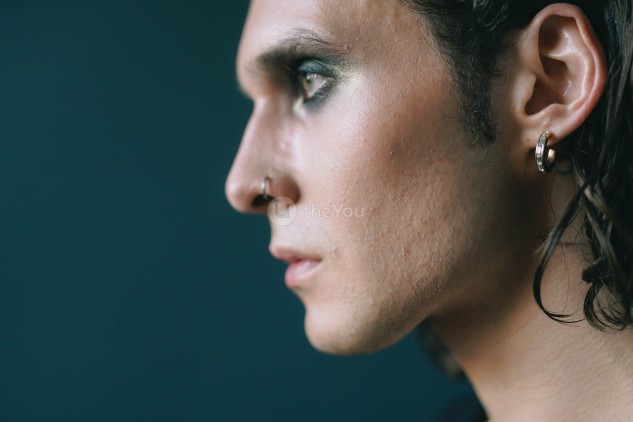
Piercing jewelry shops are filled to the brim with various pieces, from classic rings and barbells to intimidating talons, unusual nostril screws, twisters, and plugs. Let’s look at what body jewelry there is and how to choose it right.
Types and Purposes of Piercing Jewelry
Piercing jewelry comes in a variety of shapes, designs, sizes, and can be worn almost anywhere on the body. It’s important to know what jewelry works for a particular piercing type. Learn more about different types of piercings in this article.

Tops
A top is a beautiful addition to a body jewelry piece that is screwed onto its tip. They can come in the form of balls, crystals, beetles, sculls, wings, etc.
Straight Barbell
A classic barbell is a straight rod with balls on its tips. It can be worn in almost all piercings.
Surface Barbell
This is a 10-40mm barbell with its tips bent at 90 degrees to the skin surface and secured with balls.
Dermal Piercing Jewelry
Dermal piercing jewelry is a flat barbell that has one end with a top showing and the other embedded under the skin.
L-Barbell
This is an L-shaped piece primarily for women’s genital piercing called a Christina piercing.
Labret Stud
A labret stud is a straight rod with a ball on one end and a flat plate on the other. It can come in one or two pieces. Labret studs work great in ear, lip, cheek, and nose piercings, as well as monroe and medusa piercings. This is the most popular jewelry type for the initial piercing. Labret studs can be of different length and thickness, which allows you to pick a perfect piece for almost any piercing.
Monroe piercings
Medusa piercings
Clicker Ring
A clicker ring has a hinged clasp. They have either a straight or a curved post. It’s suitable for nose, conch, septum, daith, and helix piercings.
Bent Barbell
This is just a curved barbell with balls on its ends with either an internal or external threading. It’s perfect for the initial eyebrow, snug, daith, and rook piercings. It’s also suitable for a navel piercing and often comes with a more interesting top instead of one ball (a cross, flower, skull, etc.).
Nostril Screw
A nostril screw resembles a hook. According to piercers, it’s not the most convenient jewelry, and they recommend going for a labret stud instead, especially for your initial piercing.
Ring
There are seamless rings and captive bead rings. People wear them in ears, eyebrows, nose, navel, lips, and nipples.
Plug
A plug is a short cylindrical body jewelry piece that is mostly worn in earlobes and is also quite popular for tongue piercings.
Talon
This is a jewelry piece shaped like a talon. It is worn in a stretched earlobe and can be used for gradually stretching it even more.
Tunnel
Tunnels are hollow, tube-shaped pieces worn in stretched earlobes to stretch them farther.
Circular Barbell
This piece is also called a horseshoe ring with balls or cones on both ends. It works with almost all piercings.
Retainer
It’s essentially a circular barbell without tops. It’s usually used in septum piercings as it can be easily hidden in nostrils.
Twister
A twister is a spiral with balls on both ends. It’s used in ear, lip, nose, and navel piercings. A longer spiral can adorn double or triple piercings.
More about piercing: Ear Piercings: All About Types, Jewelry, Afterare
Body Jewelry Materials
The material of body jewelry is one of the most important aspects you should take into account when choosing a piece. A well-chosen, high-quality piece will let your new piercing heal quickly and successfully and won’t irritate a healed one. Pieces with alloys like nickel, copper, and other allergenic metals can cause inflammation and infection.
A tip. When it comes to choosing a piece of body jewelry, consult with a piercer first. A specialist will help you pick the right jewelry for your piercing type and anatomy.
Piercing jewelry can be made of:
- Gold. It often contains alloys like nickel and copper and is used only in earrings.
- Silver. It also contains unwelcome alloys and actively oxidizes. Piercers recommend reserving silver jewelry only for earlobes.
- Steel. It can also contain nickel, which is why it’s unfitting for an initial piercing.
- Titanium. This metal is light, strong, clean, and doesn’t cause allergies.
- Bioplast. This is flexible plastic that works well in healing piercings.
- Acrylic. This is fragile, porous material that is not suitable for initial piercings with the exception of separate elements and tops.
- Teflon (PTFE). Recent research showed that this type of flexible plastic is highly biocompatible, meaning it’s safe to use.
- Organic materials (wood, bone). Such jewelry is trendy but not that safe and is not suitable for a healing piercing.
To sum it up, we can say that titanium is the best choice for any piercing type. The second safest material is bioplast, but keep in mind that piercers don’t recommend wearing it constantly.
A well-chosen piercing jewelry piece fits perfectly, doesn’t hinder the healing process, doesn’t cause complications, and looks pretty. You can check out how different body jewelry looks in the theYou gallery.
More about piercing: How to Pierce Your Septum at Home





















to leave a comment
Log in